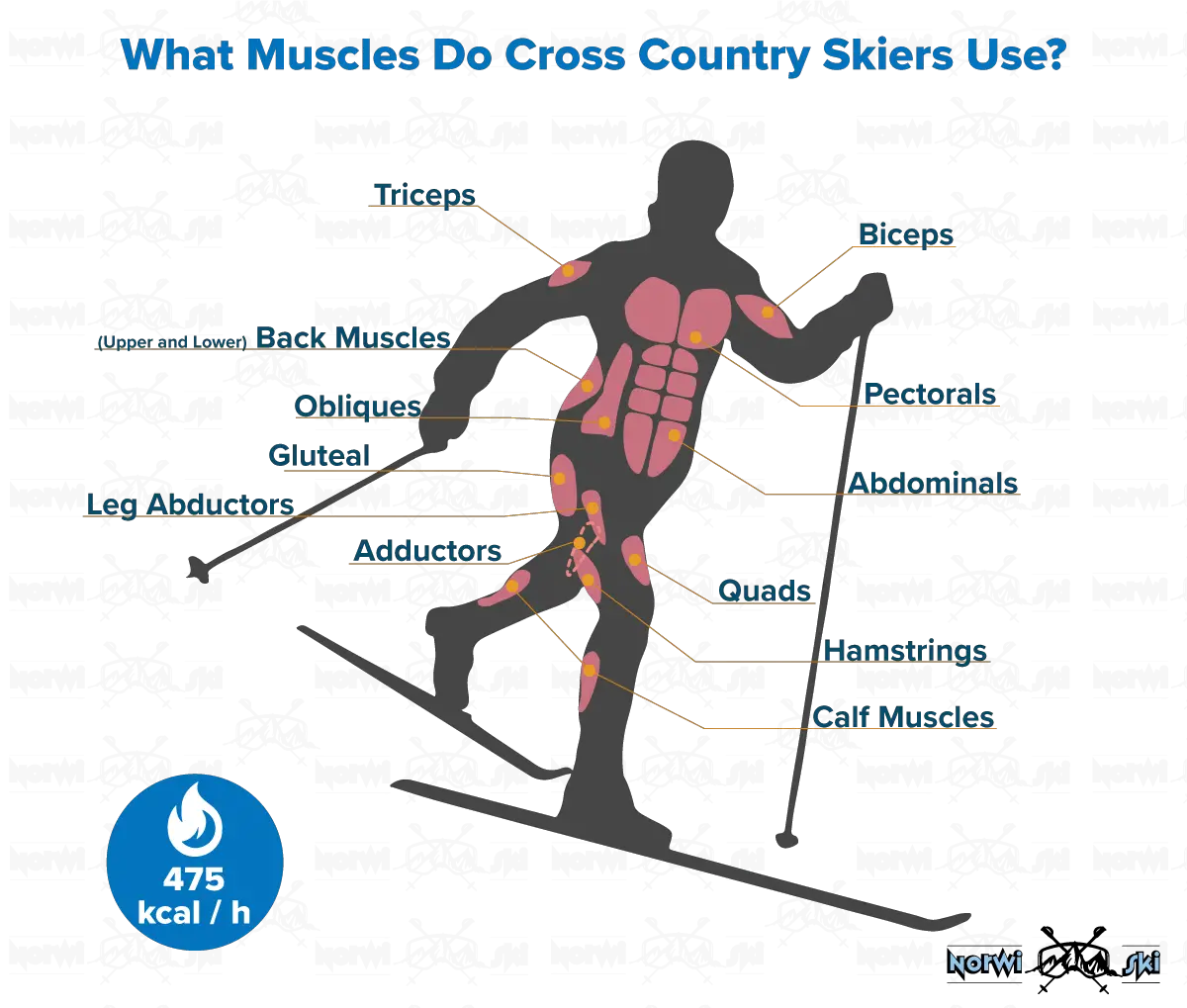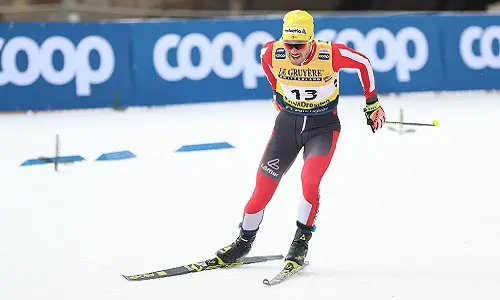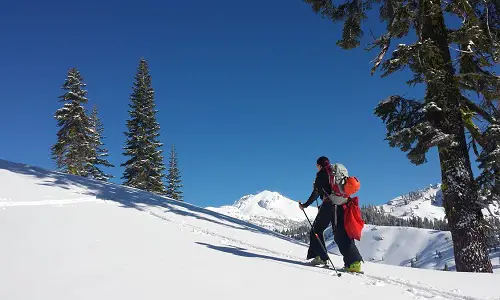Table of Contents
Cross-country skiing is a full-body workout. It involves different sets of muscles including biceps, triceps, pectorals, (upper and lower) back muscles, abdominals, obliques, quads, hamstrings, gluteal, calf muscles, leg abductors, and adductors. At a moderate pace, you can burn around 475 calories per hour while enjoying cross country skiing.
Cross country skiing demands multiple and constant interactions between your central nervous system and the muscles of your upper and lower body.
A different set of muscles work together to perform the needed ski movements including balancing, rotational movements, edging movements, and exerting pressure. All of these movements and the sequence in which each set of muscles need to work are controlled by your central nervous system.

Let us have a detailed look at the main muscles all cross-country skiers use:
The Core
The core muscles include the internal and external obliques, multifidus, and transverse abdominal muscles. You also use your rectus abdominus to balance yourself while skiing – something that is of the utmost importance in this sport.
The core muscles work together as a single muscular unit to maintain an upright body posture, stabilizing your spine and pelvis area, while navigating downhill. If your core is weak, you will be prone to frequent falling while traversing down the slope. This is the reason why people who often ski have a stable torso, and do not have flailing arms while they ski. Skiing regularly takes care of your core muscles and keep them strong while maintaining your body’s ski-specific balance and active interactions between all associated muscles.
The Lower Leg Muscles
There are two main types of muscles in your feet – the intrinsic feet muscles and the extrinsic feet muscles. We will talk about the involvement of intrinsic muscles in skiing in the next section when we focus on the foot muscles.
The extrinsic muscles, that play an important role in skiing, are in your lower leg. These muscles can be divided into three compartments:
- Anterior compartment
- Posterior compartment
- Lateral compartments
The anterior compartment muscles are present in your shin. These muscles assist skiers in dorsiflexion. The muscles in the posterior compartment are in the calf region and they help in plantar flexion. The lateral compartment muscles control the control eversion that turns your foot’s sole in the outward direction. Every time you put your skis on their edges, you perform eversion.
The Foot Muscles
The foot and ankle muscles take care of the rotational movements, the exerted pressure, as well as the edging while you do cross country skiing.
The plantar flexor muscles and dorsiflexor muscles are part of your intrinsic muscles. The plantar flexors are responsible for pointing your toes towards the ground; whereas the dorsiflexors (that are more commonly used in skiing) are required to curl your toes towards your shins. This results in the dorsiflexors keeping your skins pressed into your ski boots.
When you do cross-country skiing, you shift your body weight from one side to the other. This strengthens your hips, back, and knees. Due to this weight shifting workout, your legs get stronger, preventing your body from various kinds of joint injuries.

The Flexor and Extensor Muscles of Your Knees
Your ability to keep track of your muscles starts declining while you age and this is the main reason why your knees start feeling weaker over a passage of time as you grow older. Active sports like skiing help your body fight against aging and makes your muscles strong.
The flexor and extensor knee muscles play a vital role in controlling pressure while you ski your way down the slopes. The processes of flexion and extension refer to the bending and straightening of your legs, and the muscles involved here absorb the ground impact forces while you ski.
At the back of your legs, the hamstrings help you bend your knees. Anyone who has done skiing before or has watched someone doing it knows how important knee bending is while you are skiing.
When your hamstring muscles are strong and healthy (something that is in the case of all the active skiers), they protect your extremely sensitive knee ligament – known as the anterior cruciate ligament. The anterior cruciate ligament can snap under pressure, so skiing helps you keep all those muscles and ligaments healthy and strong. The quadricep muscles perform the function of straightening your legs, stabilizing the knee joint, and preventing any unwanted rotation of the knee.
The Gluteal Muscles
The Gluteal Maximus muscles are considered as the strongest muscles in your body. They are some of the most important muscles involved in skiing as they involve the movement of your hips and thighs. These muscles are in the buttocks and help your body in all kinds of bending and straightening while you climb up, go down, or ski side hill.
The gluteus Medius is one of the three gluteal muscles and is present at the outer surface of your pelvis. It helps in your leg rotation when you want to steer your skis. Gluteal Medius moves your leg away from the center of your body, so when you do cross-country skiing you are exercising those muscles and making them strong.
The Arm Muscles
The best part about cross-country skiing is that it is an excellent workout for your entire body and you can exercise various large muscle groups at one time. Skiing does not only involve your core and leg muscles, but the muscles in your upper arm (the biceps and triceps) also work super hard to support your movement.
This is one of the biggest differences between skiing and other forms of endurance exercises (such as cycling and running) – your upper body plays an important role and the muscles remain active and strong.
The Heart Muscles – Cardio
Cross-country skiing makes your heart work harder and smarter and is a strenuous workout that is good for body health and heart health. There is a massive amount of muscle mass being used all at one time when you ski.
As a result, your body uses oxygen efficiently and delivers it to the working muscles. Overtime when you regularly do skiing, your heart health becomes better, your heart becomes stronger, and it pumps up blood more efficiently with a reduced heart rate.
You reach your maximum heart rate while you do cross-country skiing. Therefore, it is a great cardio workout. For those who prefer going a bit less intense, they can control their cardio workout by going a little slower in the tracks. It is all up to you – but no doubt outdoor workout during the winter (like skiing) is a lot better than your indoor gym.
Aerobic and Anaerobic Workout
Skiing is a great aerobic as well as anaerobic sport as skiers use their momentum and bodyweight to ski. The aerobic threshold is a relatively steady state of workout that you can perform for a longer duration of time without going out of breath. Cross-country skiing lets you increase your aerobic threshold so that you can go for a longer duration.
The anaerobic threshold, on the other hand, is the point when your body switches from its aerobic metabolism to anaerobic one. It is a great measure in endurance sports when you need to decide the intensity of your workout. During intense skiing when your body cannot keep up with its energy demands, the anaerobic state kicks in. When you go uphill, sidehill, and even try out those ungroomed terrains while on your ski, you may come across a point when your body craves for some extra energy supplies, which is met by the anaerobic system. For endurance training, anaerobic workouts are achieved when you do long-distance skiing.
Conclusion
Cross-country skiing is more than just a recreational sport. It is an ideal workout, that focuses on high endurance. During the winters when the maximum workout you could think of is hitting the gym, cross-country opens a new world to you. Whether you plan to enjoy a light regular workout or high endurance one – skiing gives you so many options to move all the muscles in your body.
In addition to the exercising of large and small muscle groups, cross-country skiing promotes a better sense of self-awareness. You get a better control over your limbs and pause the effects of aging.
Not to mention, when you have nature in the purest form all around you and fresh air circulating in your lungs, you get tons of mental health benefits. Your mood changes and you feel younger, more active, and in control. In short, skiing keeps you physically, mentally, and emotionally sound. It keeps you healthier, stronger, and at peace. Cross-country skiing involves more than just some muscles – it keeps your body and soul active yet calm. Isn’t that what we all want?


